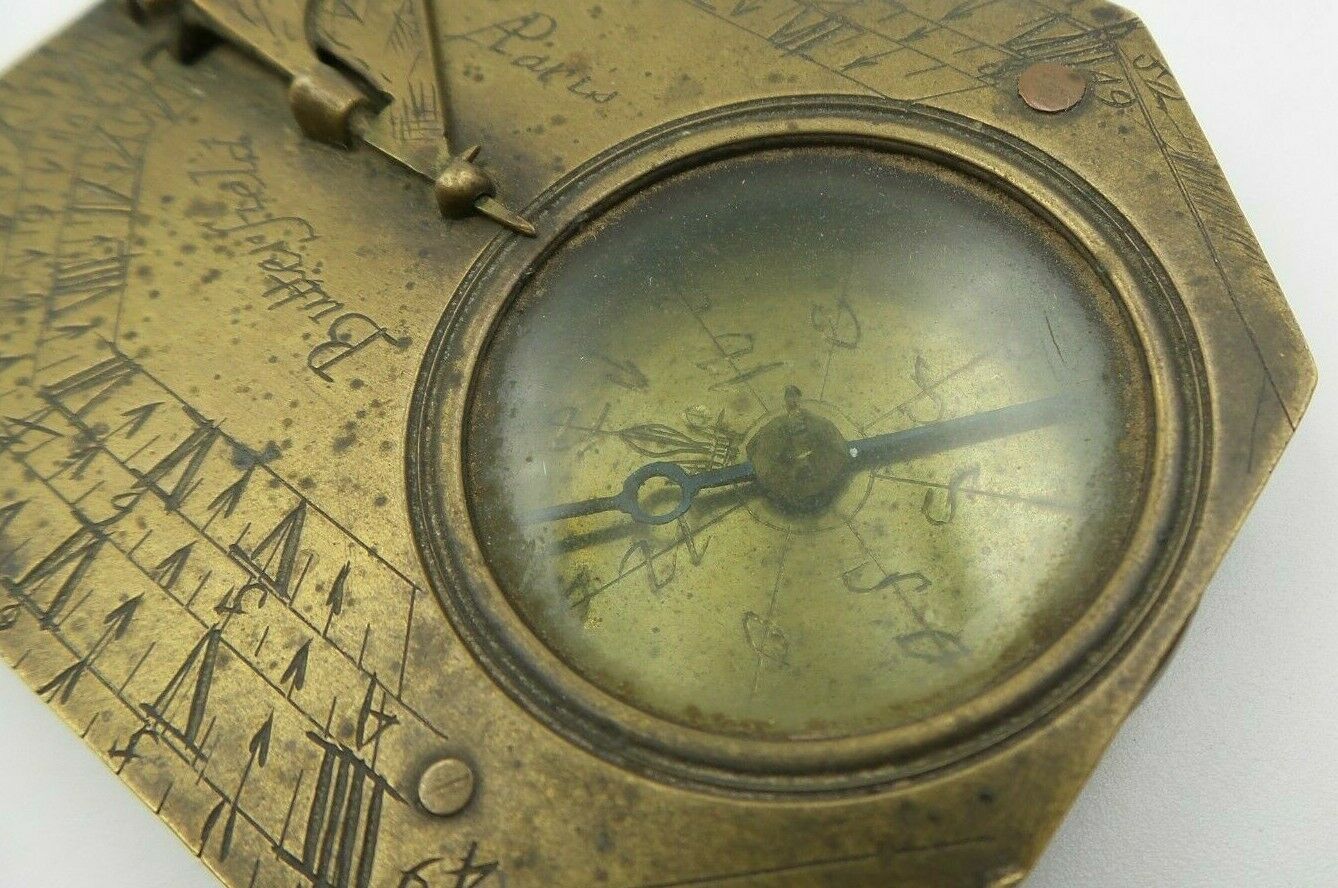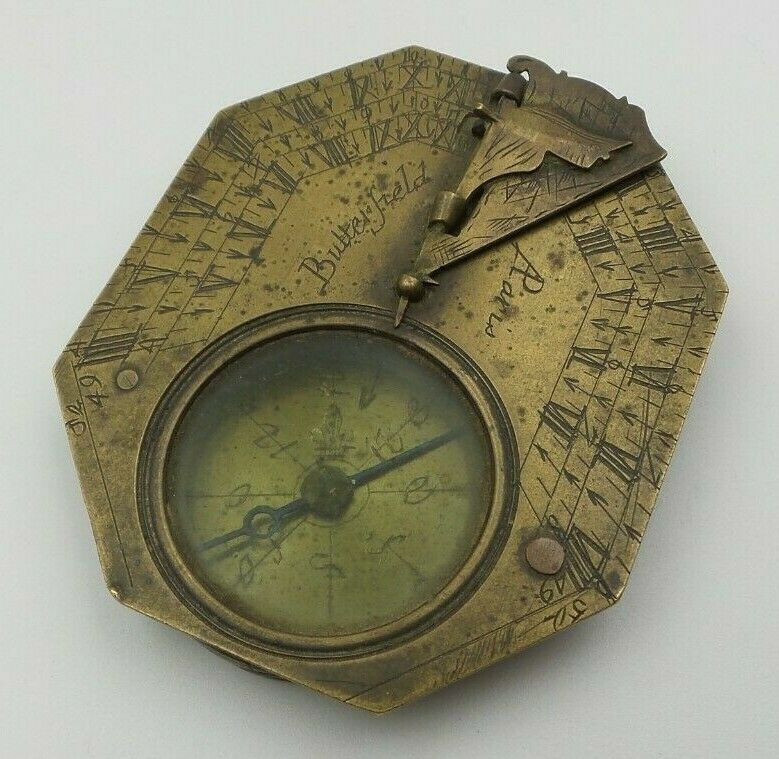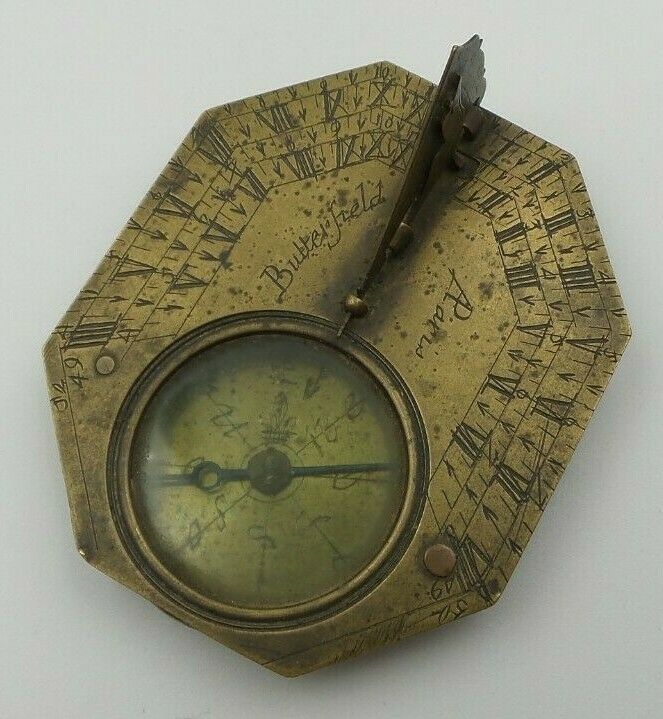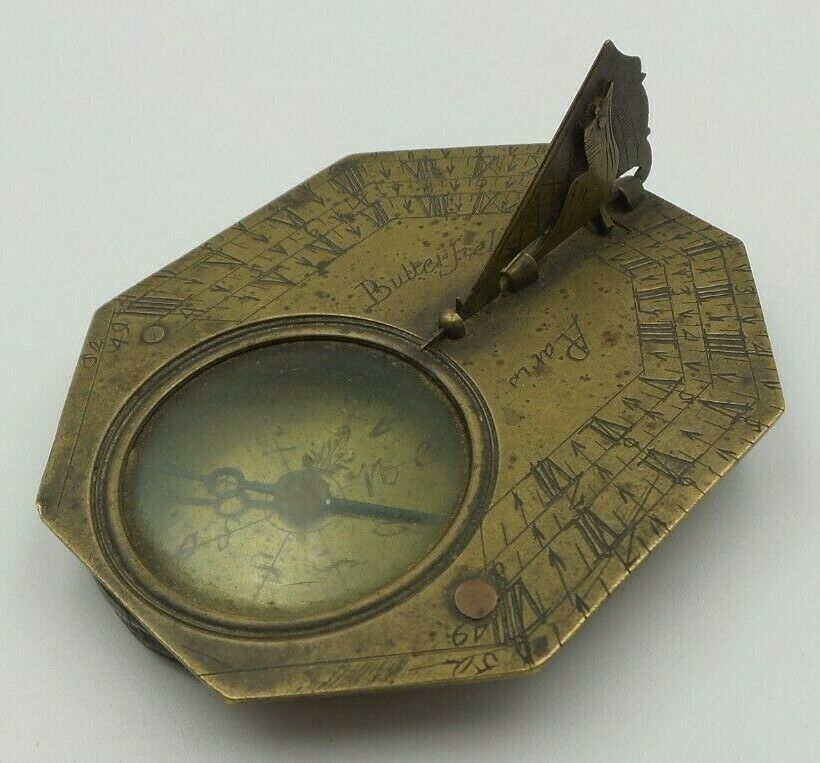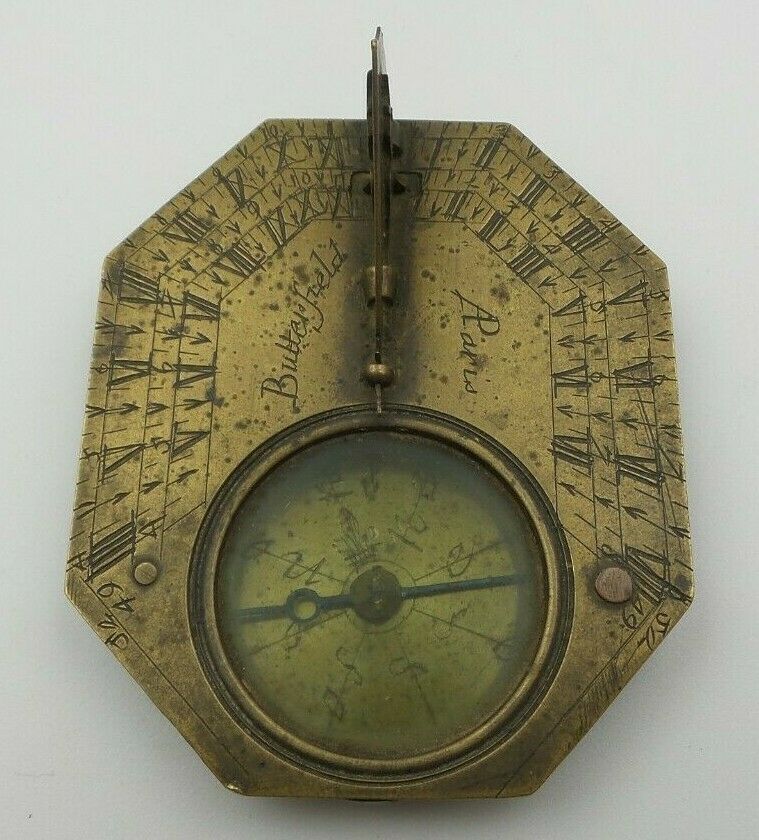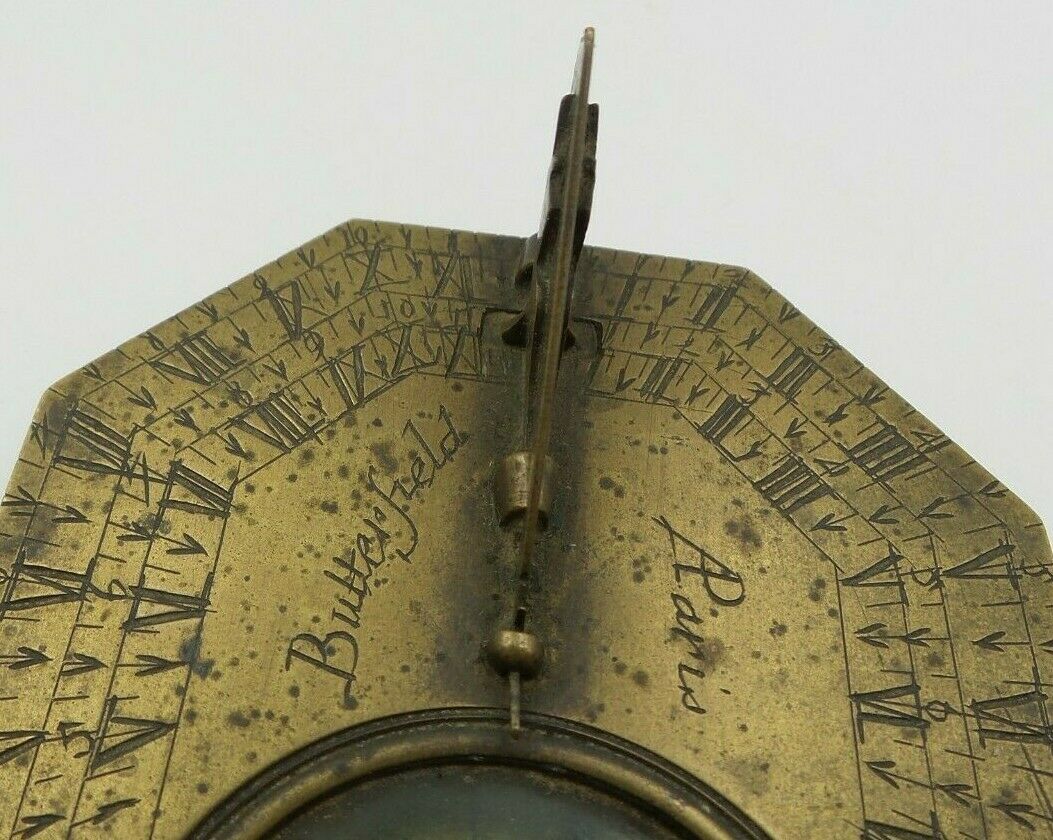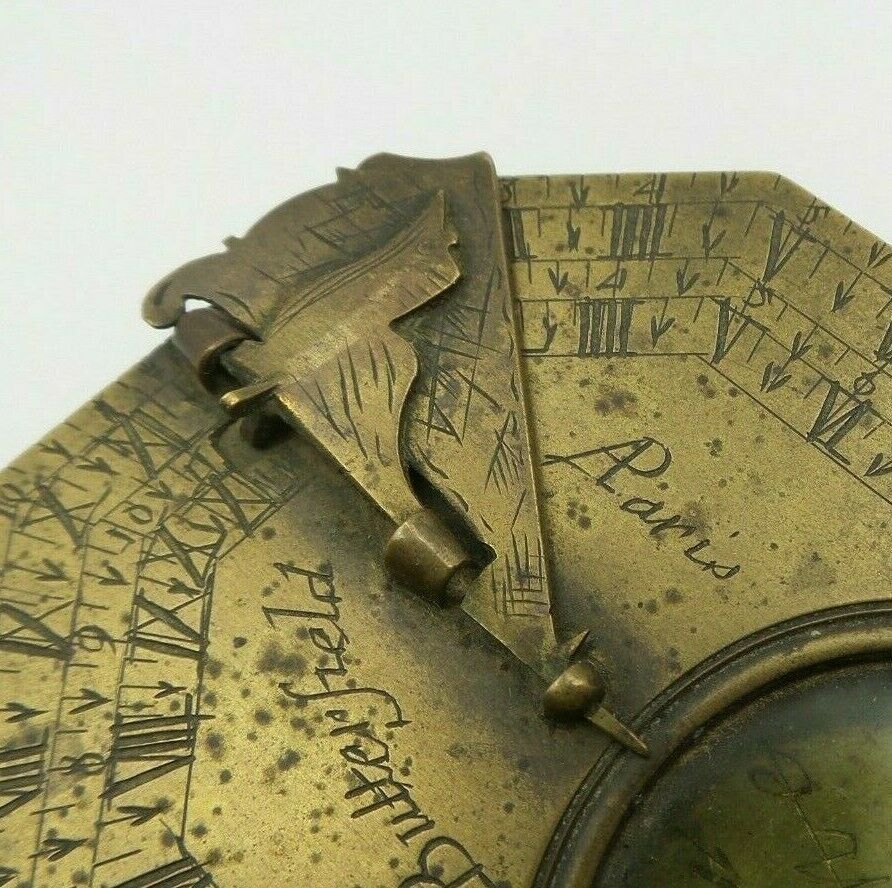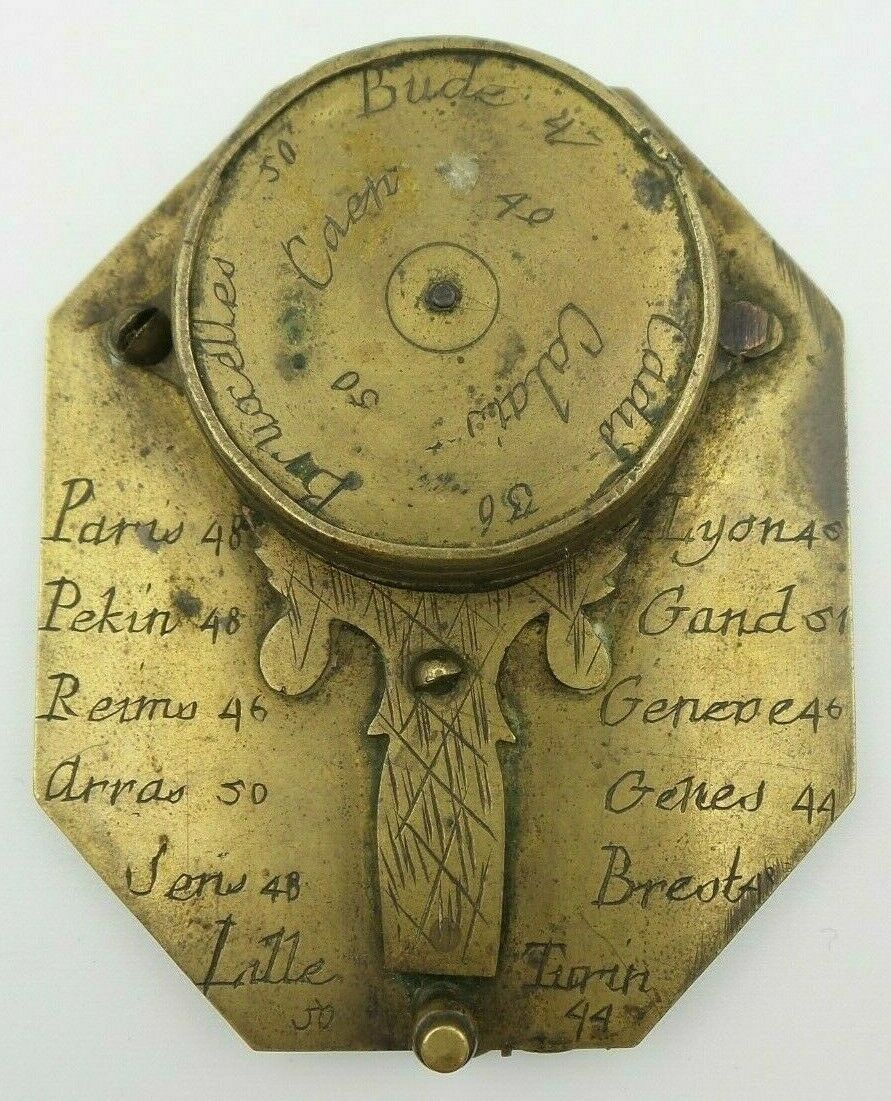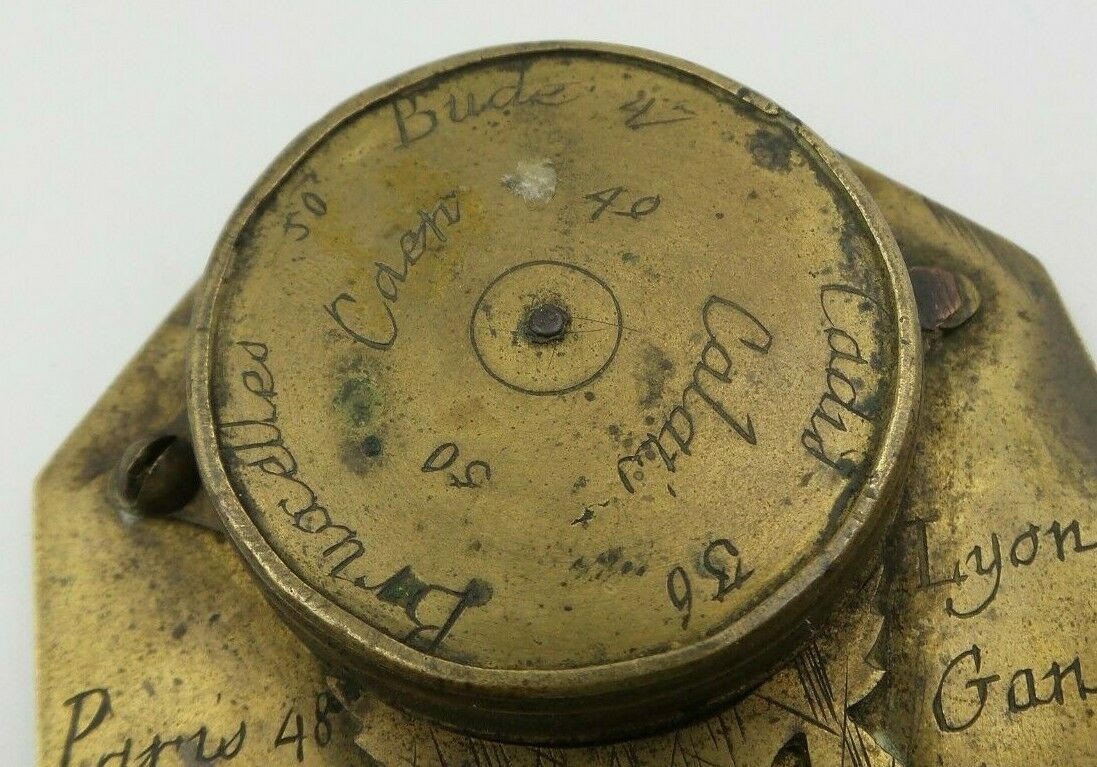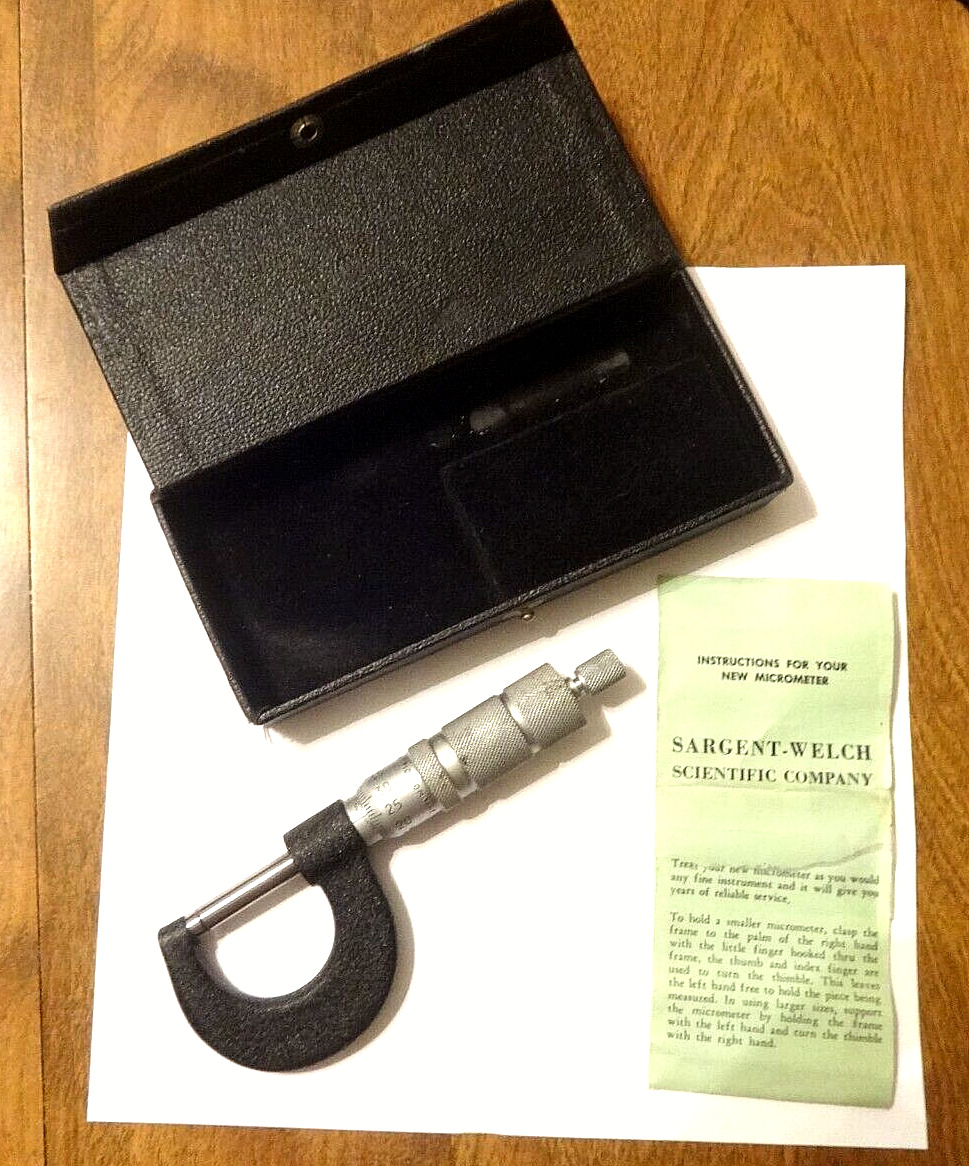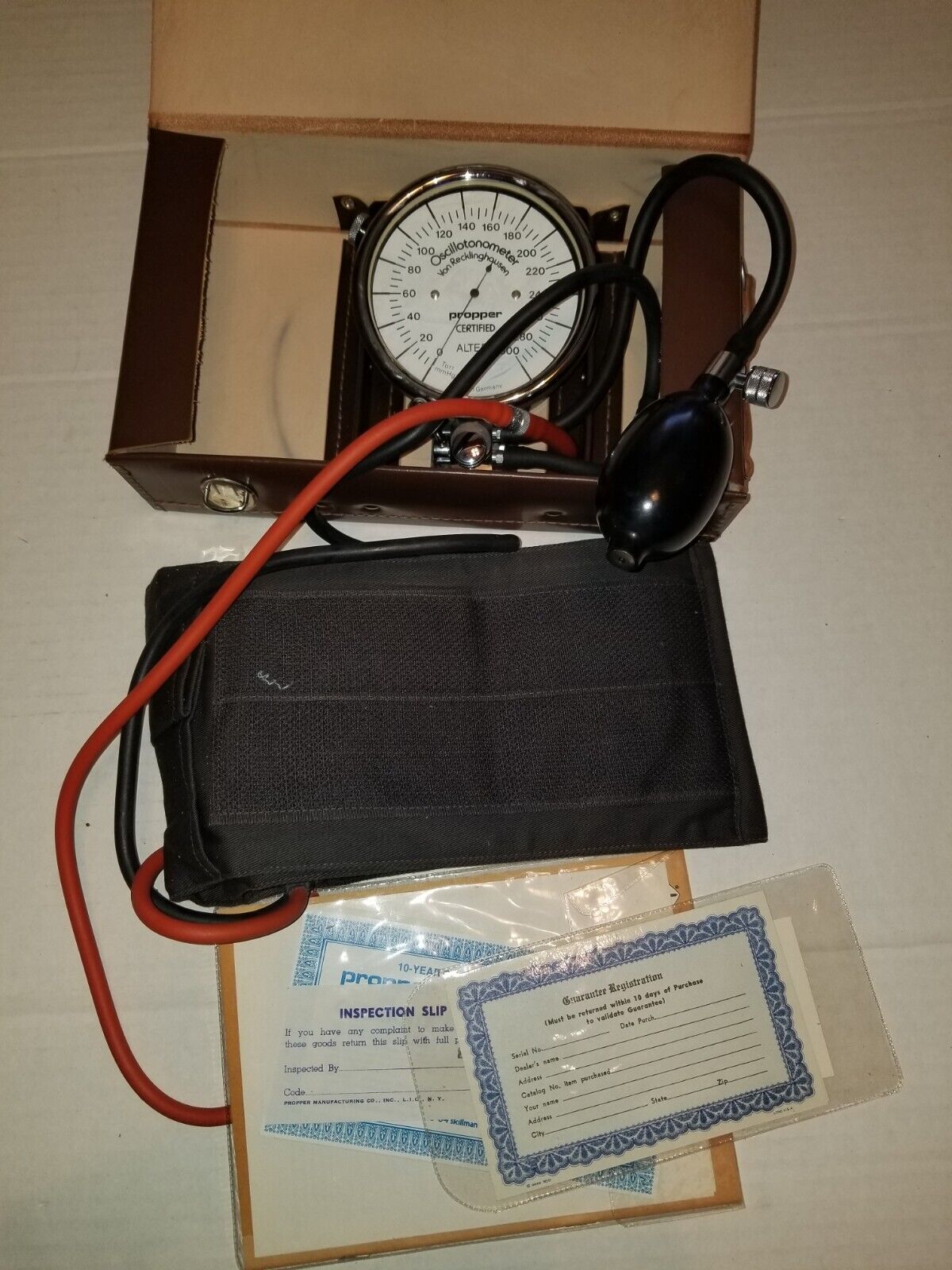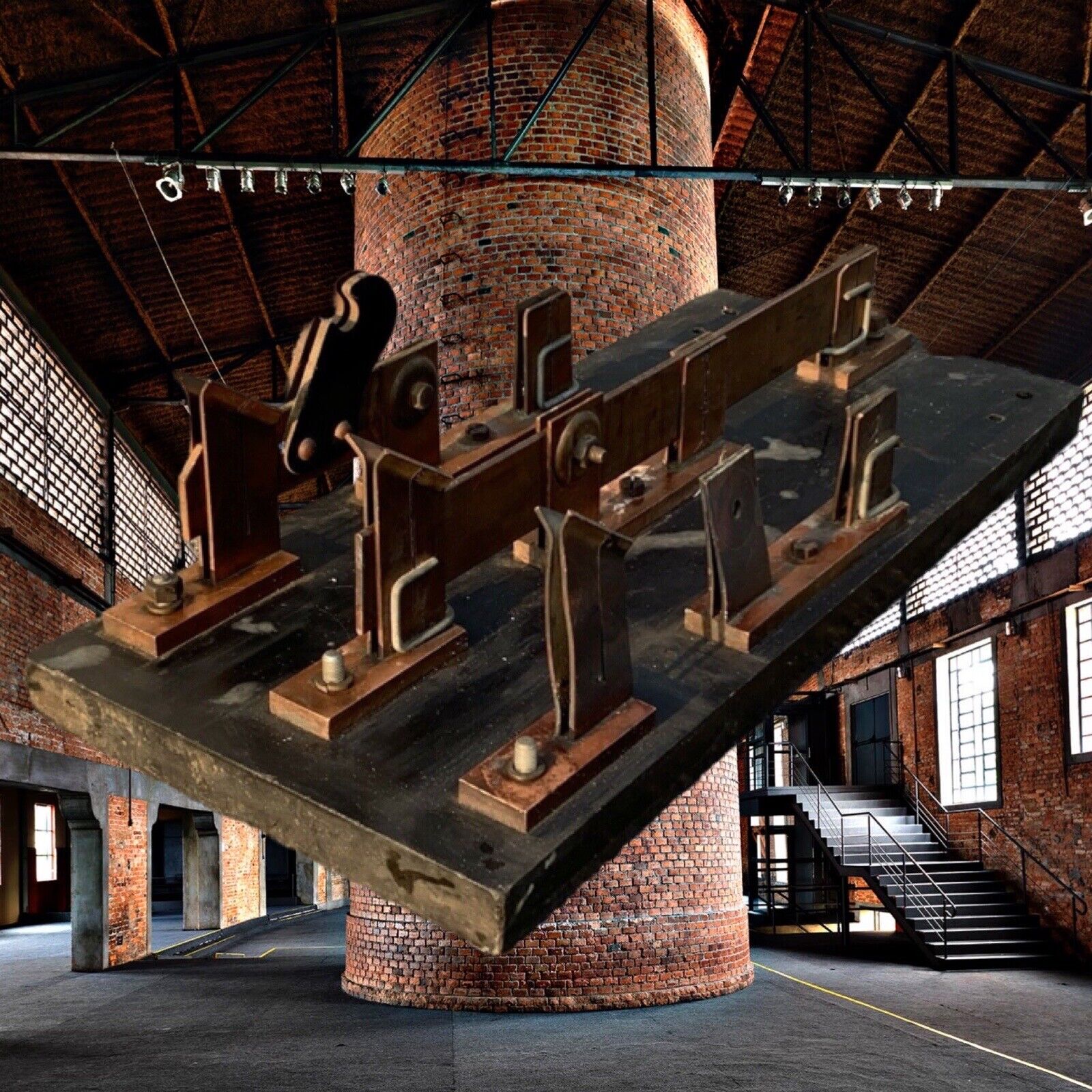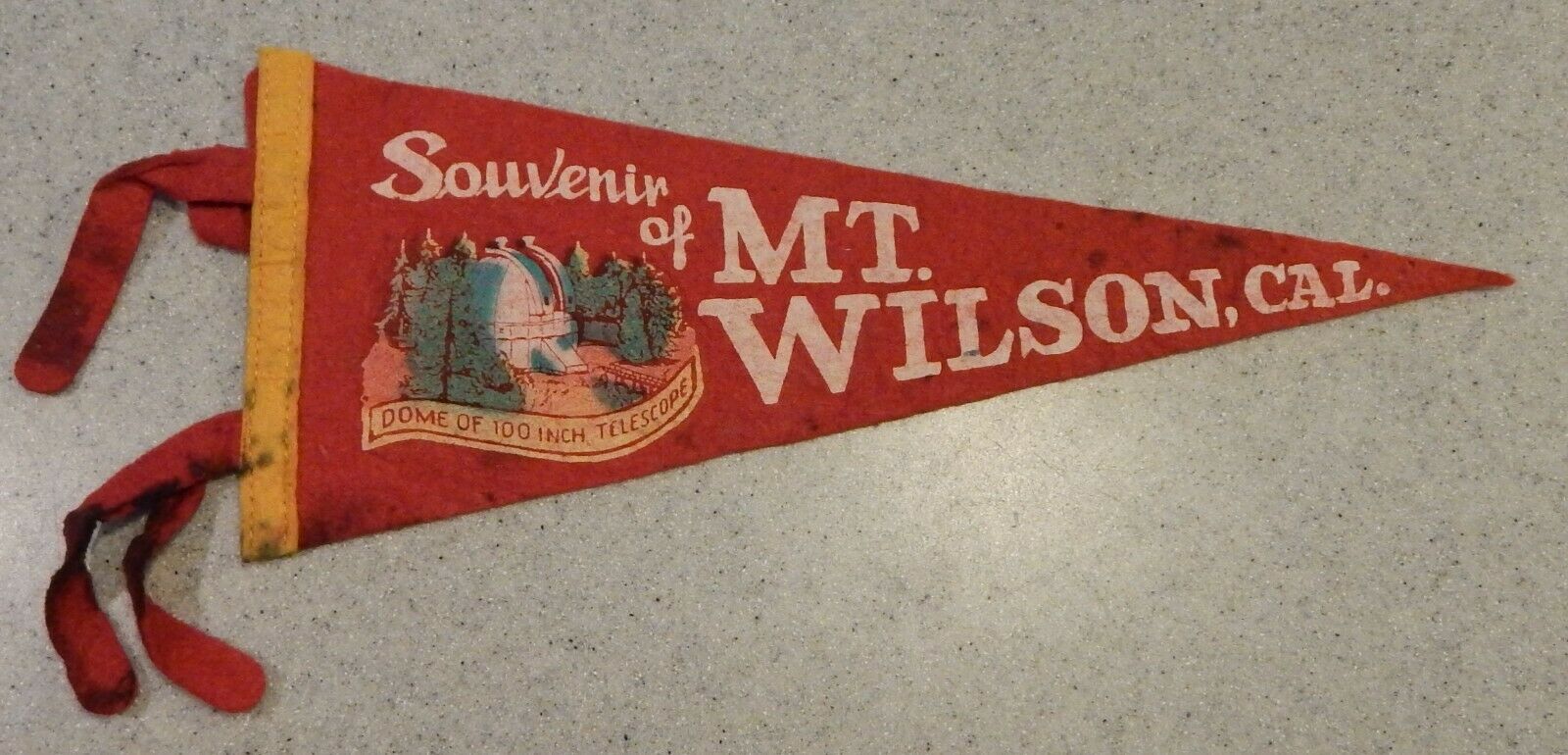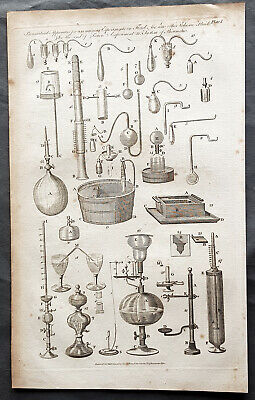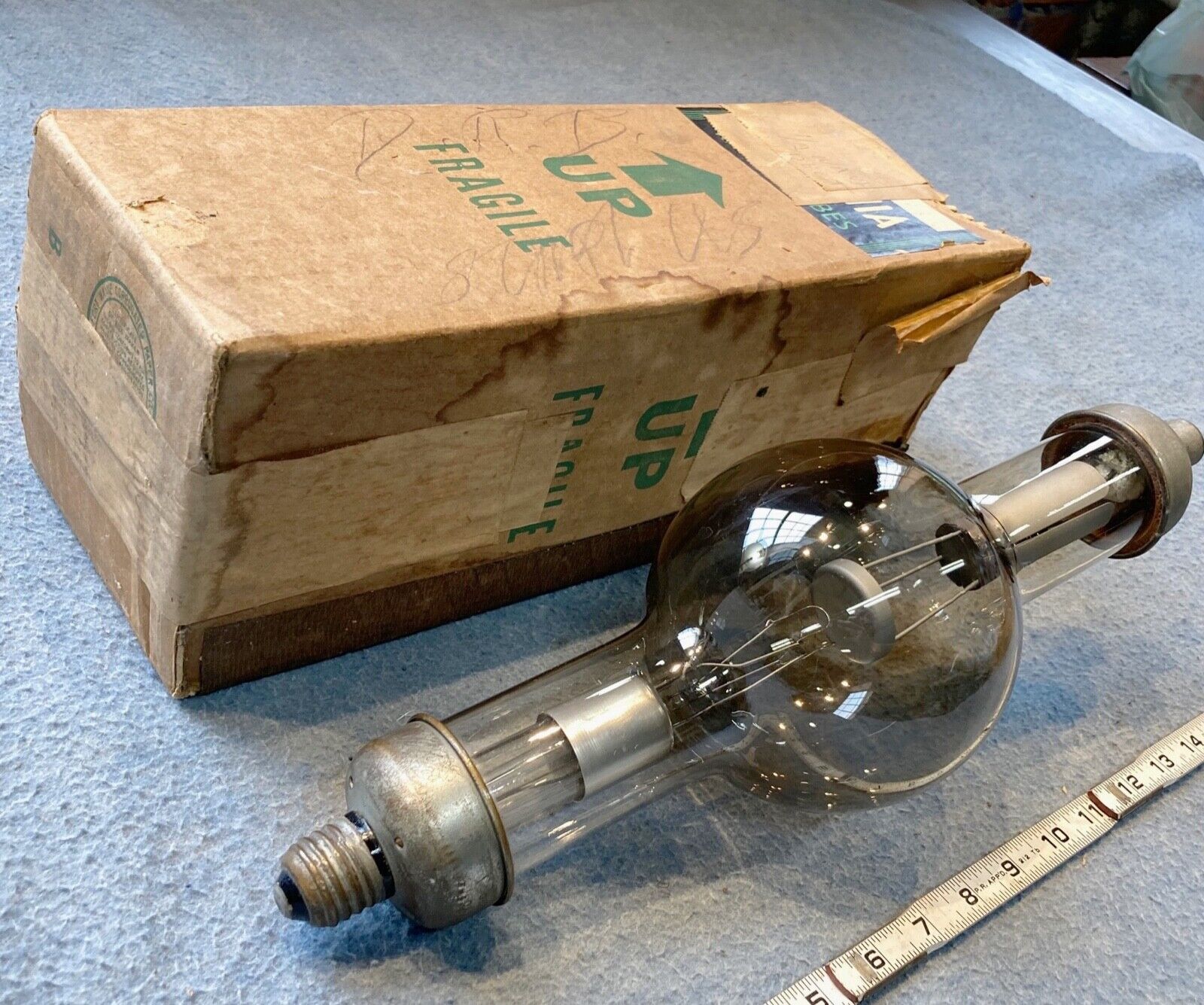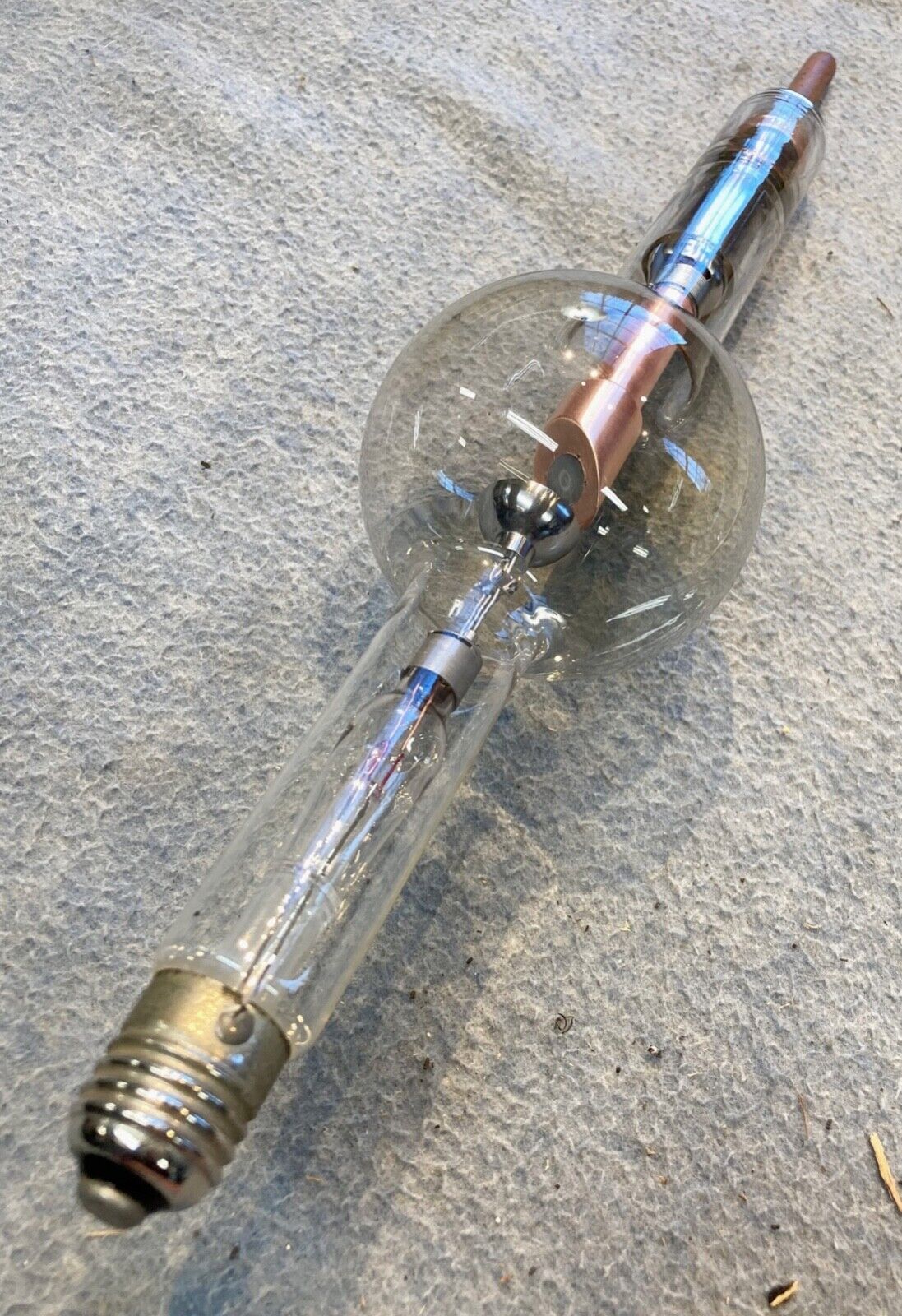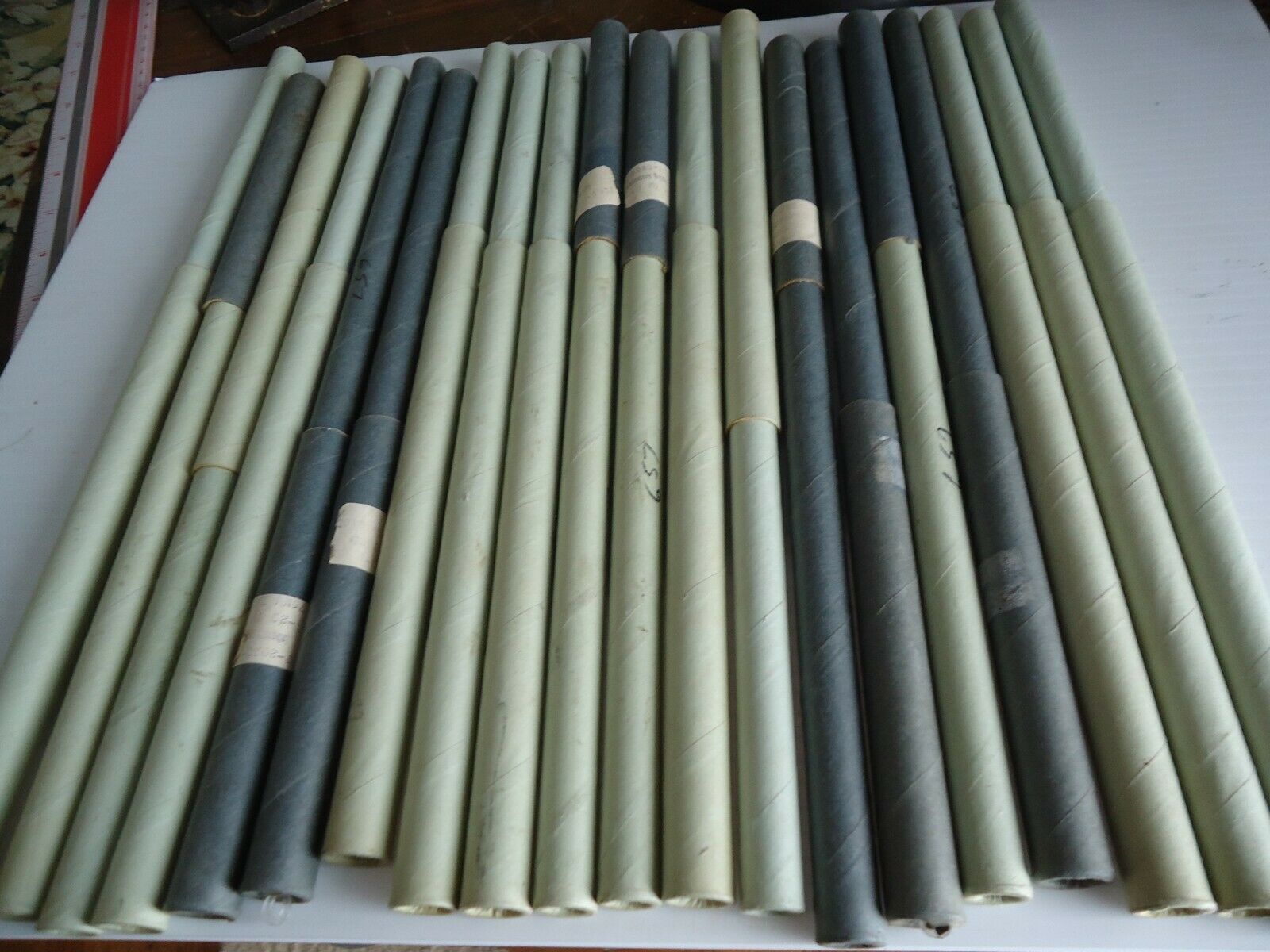-40%
Antique 1700 Michael Butterfield France Octagonal Brass Pocket Sundial & Compass
$ 739.19
- Description
- Size Guide
Description
An Antique 1700 Michael Butterfield France Octagonal Brass Pocket Sundial & Compass with four chapter rings for latitudes 52°, 49°, 46° and 43°, folding bird indicator gnomon signed Butterfield à Paris, 1in. compass with blued steel indicator, the reverse inscribed with latitudes for various European locations.The sundial can be used anywhere between latitudes of 40° and 60° covering Southern Spain and Italy north to Scandinavia. The elaborately engraved base plate has various Roman chapter rings with subdivisions on which the folding hinged gnomon (a triangular flap) casts its shadow. It is signed by the maker: Butterfield A Paris. On the front it features a glazed recessed compass, with a blued steel hand, to position the instrument in such a way that the time can be read. The triangular gnomon is richly engraved and can be set for a particular latitude by sliding the gnomon up or down, the latitude being indicated by the beak of a figured engraved bird. The folding gnomon and cut corners allow for the dial to be carried in the pocket.
The underside shows the latitudes of various locations.
Based on my research and the design, this is probably an earlier model from the late 1600s rather than the early 1700s.
Michael Butterfield (1635-1724) was a British clockmaker who settled in Paris about the year 1663. He worked for the royal court of France and was appointed engineer to the King. He opened in the district faubourg Saint-Germain, in the street rue Neuve-des-Fossés, a shop for precision instruments. His shop's sign read AUX ARMES D'ANGLETERRE (at the sign of England's coat of arms, 1st mention in 1677). Russia's Czar Peter the Great visited his shop in 1717 and ordered a great quantity of dials made of gilt copper.
These types of dials, often replicated by other makers, became known as Butterfield Dials. However, i
t was not Butterfield who originally designed these instruments. Examples are known which clearly date from before the time that Butterfield began working in Paris. Earlier items known were made by Roch Blondeau (dated 1673), but also by Timothée Collet. The fact that Butterfield used a bird-shaped pointer on the gnomon and the overall high quality probably made his sundials highly fashionable and he soon had a monopoly on the market.
One of the reasons for the importance of sundials was that early watches did not keep time particularly well and dials such as this one were indispensable to set a watch after it had stopped running or had started to deviate from the actual time. Anecdotally, sundials may also have been preferred to sounding timepieces whilst on the road – the chimes being thought to attract thieves.
Some of these pieces can be adorned in Museums around the world, among them the British Museum.
Condition:
Good. Wear consistent with age and use. All pieces are functional. I haven't tried to move the gnomon / bird up and down since it seems to be stuck after centuries and I didn't want to break it. Some oil and patience can probably resolve the matter.
Dimensions:
Height: 2 3/4" / Width: 2 1/4" / Depth: 5/16"
